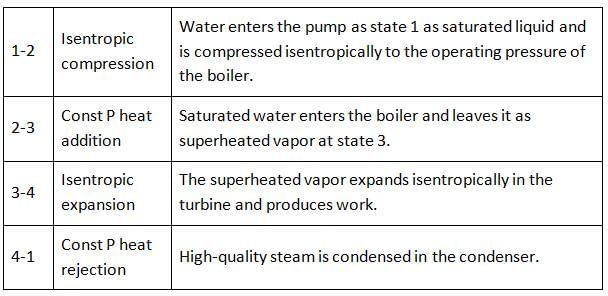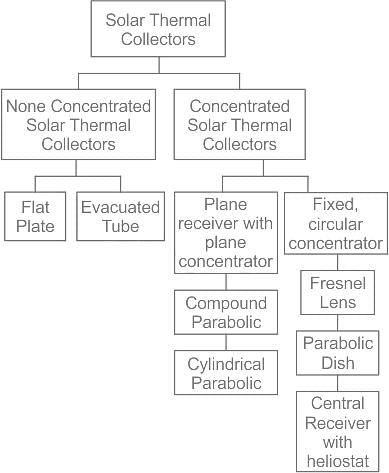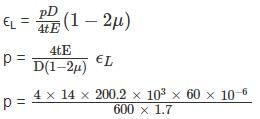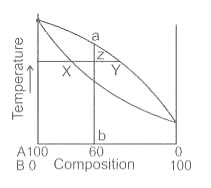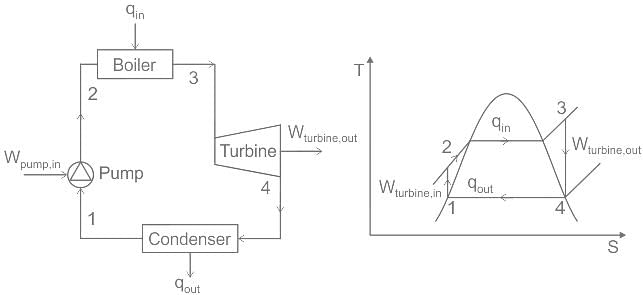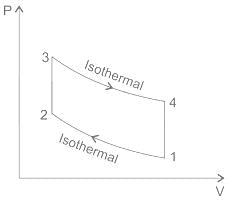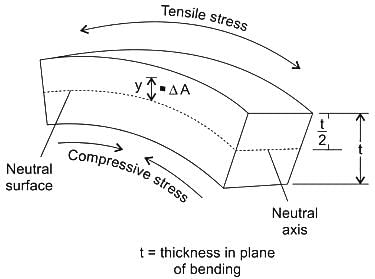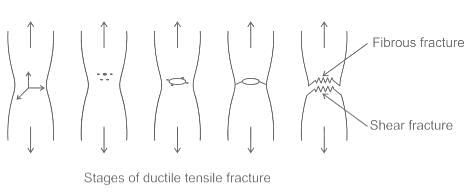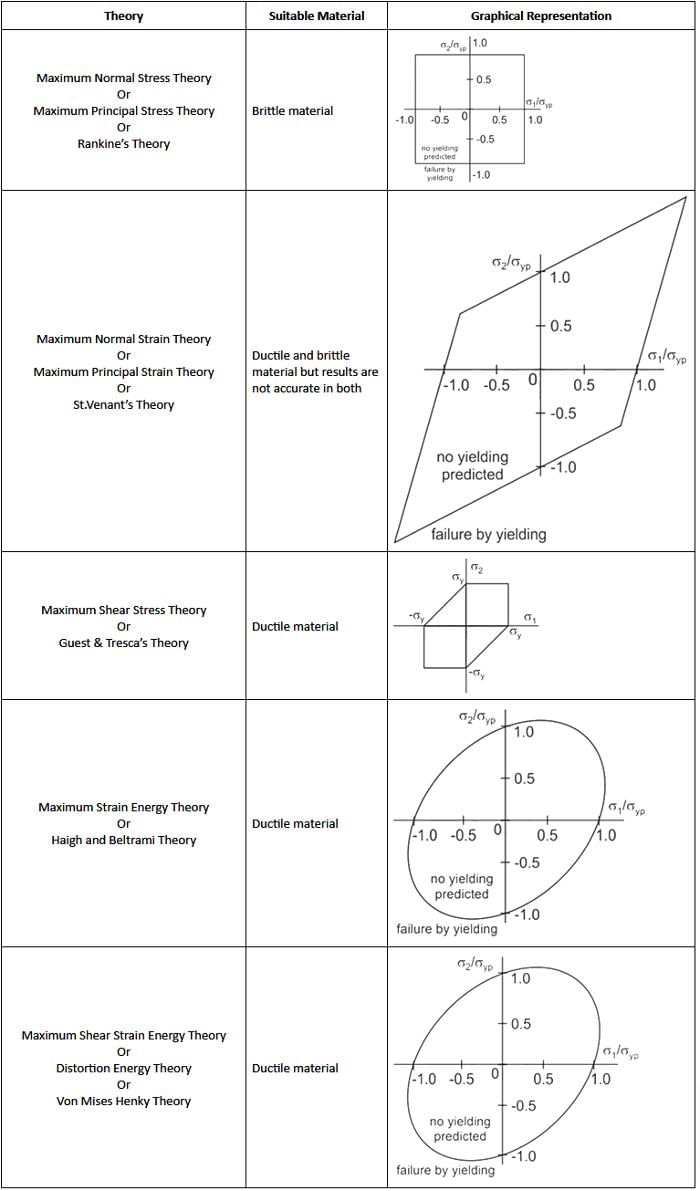ESE (ME) Paper II Mock Test - 2 - Mechanical Engineering MCQ
30 Questions MCQ Test - ESE (ME) Paper II Mock Test - 2
Statement l: Required degree of subcooling and superheating may not be possible if one were to rely only on heat transfer between the refrigerant and external heat source and sink.
Statement ll: The degree of subcooling will always be less than the degree of superheating in liquid-suction heat exchange.
Statement ll: The degree of subcooling will always be less than the degree of superheating in liquid-suction heat exchange.
Which of the following statements does NOT apply to the volumetric efficiency of a reciprocating air compressor?
A simply supported beam is subjected to a uniformly distributed load. Which of the following statements are true?
i. Maximum or minimum shear force occurs where the radius of curvature is zero.
ii. Maximum or minimum bending moment occurs where the shear force is zero
iii. Maximum or minimum bending moment occurs where the radius of curvature is zero
iv. Maximum bending moment and maximum shear force occur at the same section
i. Maximum or minimum shear force occurs where the radius of curvature is zero.
ii. Maximum or minimum bending moment occurs where the shear force is zero
iii. Maximum or minimum bending moment occurs where the radius of curvature is zero
iv. Maximum bending moment and maximum shear force occur at the same section
Consider the following statements regarding nano-materials.
1. They have a large fraction of surface atoms.
2. They have high surface energy.
3. They have large imperfections compare to the bulk material.
4. They are used in fuel cells.
Out of these statements:
A link OB is rotating with a constant angular velocity of 2 rad/s in counter clockwise direction and a block is sliding radially outward on it with an uniform velocity of 0.75 m/s with respect to the rod, as shown in the figure below.If OA = 1 m, the magnitude of the absolute acceleration of the block at location A in m/s2 is
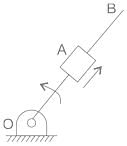
Statement I: An increase in current in EDM results in increased MRR
Statement II: An increase in spark frequency at constant current results in an improved surface finish.
Consider the following statements:
In the critical path method of constriction planning. ‘Free Float’ can be
1. greater than total float
2. greater than independent float
3. equal to total float
4. less than independent float
Of these statements
Consider the following statements regarding cams:
1. Base circle is the smallest circle tangent to the cam profile (contour) drawn from the centre of rotation of
a radial cam.
2. Pitch curve is the curve drawn by the trace point assuming that the cam is fixed, and the trace point of
the follower rotates around the cam.
3. Pitch circle is the circle passing through the pitch point and concentric with the base circle.
4. The smallest circle drawn tangent to the pitch curve is known as the prime circle.
Which of the above statements are correct?
Total Quality Management (TQM) and Quality assurance are the responsibility of everyone involved in designing and manufacturing of the product. Who among the following pioneers has NOT been quality control heightened?
An oil of viscosity 10 poise flows between two parallel fixed plates which are kept at a distance of 50 mm apart. What is the rate of flow of oil between the plates if the drop of pressure in a length of 1.2 m be 0.3 N/cm2 and the width of the plate is 200 mm?
Consider the following statements regarding the Euler turbine equation:
1. The axial component produces bending of the shaft which is taken by the journal bearings.
2. The axial force only can cause the rotation of the runner and produce work.
3. The tangential force only can cause the rotation of the runner and produce work.
4. The radial component produces bending of the shaft which is taken by the journal bearings.
Which of the above statements are correct?
Which one of the following statements is NOT correct?
Match the following:
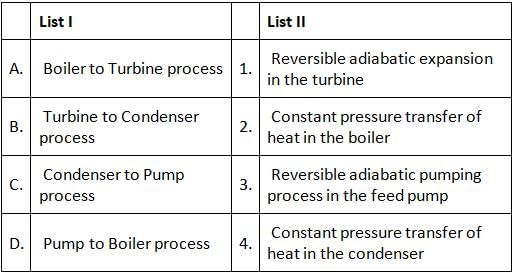
Select the correct matching using the code given below:
The concentration ratio of as high a value as 3000 can be obtained by
A cylindrical storage tank has an inner diameter of 600 mm and a wall thickness of 18 mm. The transverse and longitudinal strains induced are 255 × 10-6 mm/mm and 60 × 10-6 mm/mm, and if G is 77 GPa, the gauge pressure inside the tank will be
In the study of phase diagrams, the rule which helps to calculate the relative proportions of liquid and solid material present in the mixture at any given temperature is known as
What is the standard value of solar constant adopted by World Radiation Centre?
In single basin, double effect scheme, power is generated
In a solar passive space heating system, the south-facing thick wall is called
In order to burn a fuel completely, which of the following basic conditions must be fulfilled?
1. Supply enough air for complete combustion of fuel.
2. Secure low turbulence for thorough mixing of fuel and air.
3. Maintain a furnace temperature high enough to ignite the incoming fuel air mixture.
4. Provide a furnace volume large enough to allow time for combustion to be completed.
Select the correct answer using the code given below:
In a thermoelectric thermometer for t°C temperature, the emf is given as: E = 0.003t - 5 × 10-7 t2 + 0.5 × 10-3 volts. The thermometer is having a reference junction at the ice point and is calibrated at the ice point and steam point. What is the temperature shown by the thermometer for a substance at 30°C?
A body is moving with a velocity of 2 m/s. After 4 seconds, the velocity of the body becomes 5 m/s. The acceleration of the body is
Consider the following statements for the symmetric beam under pure bending :
1. In the elastic range, the normal stress varies linearly with the distance from the neutral surface.
2. As long as the stresses remain in the elastic range, the neutral axis passes through the centroid of the section.
3. If stresses are in the plastic range, the neutral axis passes through the centroid of the section.
Which of the above statements is/are correct?
Consider the following statements for ductile fracture:
1. The material undergoes substantial plastic deformation with high energy absorption before fracture.
2. Presence of cracks on the surface of material initiates this type of failure.
3. Fracture occurs due to necking.
Which of the above statements is/are correct?
Which one of the following theories gives satisfactory results for brittle materials ?
Consider the following statements regarding defects in forgings
1. Flakes are internal breaks or ruptures occurring in some grades of alloy steel.
2. Die shift is caused by misalignment between the top and bottom forging dies.
3. Fins and rags are small projections or loose metal driven into the surface of the forging.
Which of the above statements are correct ?


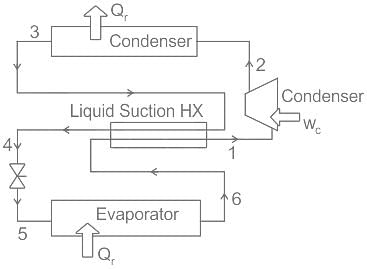
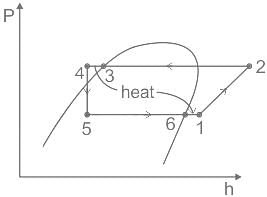






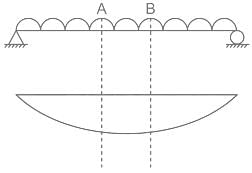

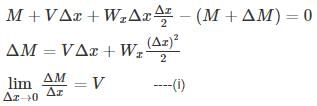

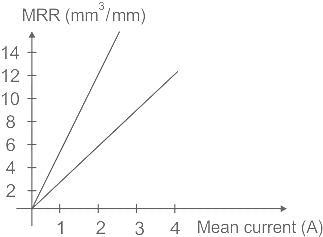


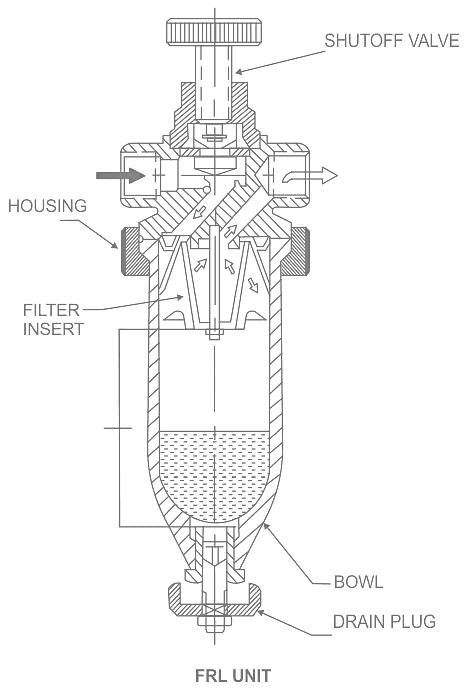
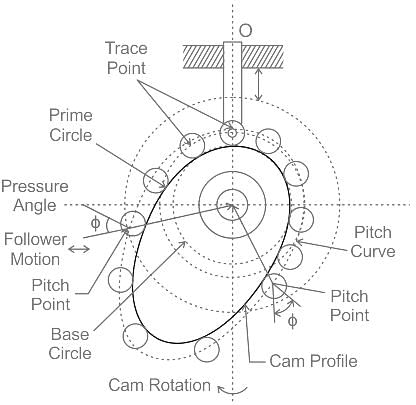
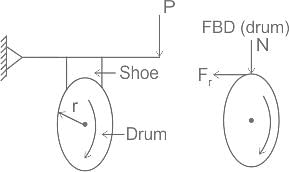
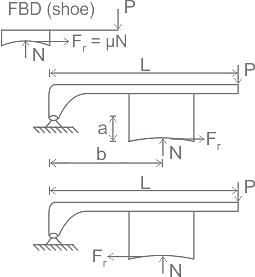



 Relative velocities at inlet and outlet.
Relative velocities at inlet and outlet. The tangential component of absolute velocities at inlet and outlet.
The tangential component of absolute velocities at inlet and outlet.







